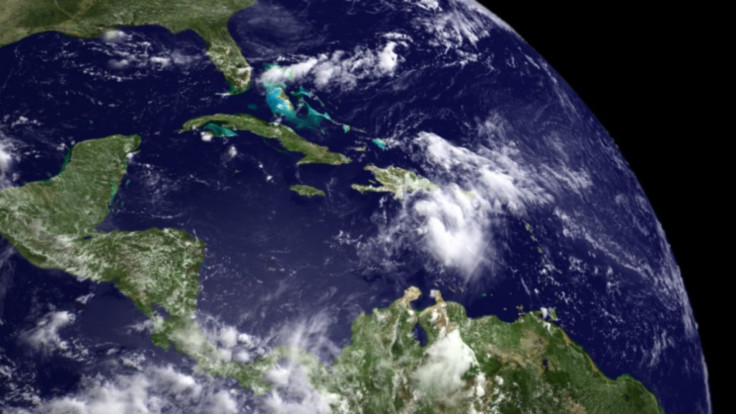Emily breaks up over Haiti, still threatens rains

Tropical Storm Emily broke apart over the mountains of Haiti and Dominican Republic on Thursday but its remnants still packed rains threatening flash floods and mudslides in the neighboring Caribbean countries.
The U.S. National Hurricane Center said the storm dissipated into a low pressure trough, but cautioned it still had "some" potential to regenerate on Friday or Saturday.
This meant Florida's authorities would be watching the weather system to ensure it did not re-strengthen into a threat to the state's eastern coast.
The remnants of Emily were located 100 miles south-southwest of the eastern tip of Cuba at 5:00 p.m. (2100 GMT), the Miami-based center said. Emily had been the fifth named storm of the 2011 Atlantic hurricane season,
Its remaining clouds and thunderstorms were moving northwest across the Caribbean. The governments of the Dominican Republic, Cuba and the Bahamas all dropped tropical storm watches and warnings after it weakened.
The hurricane center warned rainfall could still reach as much as 20 inches in parts of Haiti and Dominican Republic.
Heavy rainfall is a significant threat to Haiti, which is vulnerable to flash floods and landslides because of its near-total deforestation. In June, at least 23 people were killed after rains unleashed flooding and mudslides.
Occasional light rains fell on Thursday in the sprawling, mountain-cradled Haitian capital of Port-au-Prince, where more than 600,000 survivors of the 2010 earthquake still live in fragile tent and tarpaulin camps.
Haitian President Michel Martelly and civil defense officials had issued public appeals for those living in low-lying or flood-prone areas of the hilly, quake-damaged capital to move to safer areas and not wait to be evacuated.
Emily posed no threat to oil and gas production facilities in the U.S. Gulf of Mexico. Some tracking forecasts had earlier showed it crossing the Bahamas and possibly approaching Florida by the weekend.
On Thursday, NOAA raised its outlook for activity in the 2011 Atlantic hurricane season, predicting it would produce 7 to 10 hurricanes [ID:nN1E7730WR].
Three to five of those were expected to strengthen into "major" hurricanes of Category 3 or higher on the five-step Saffir-Simpson intensity scale, with top winds of at least 110 miles per hour, it said.
In May, NOAA projected 6 to 10 hurricanes.
© Copyright Thomson Reuters 2024. All rights reserved.











